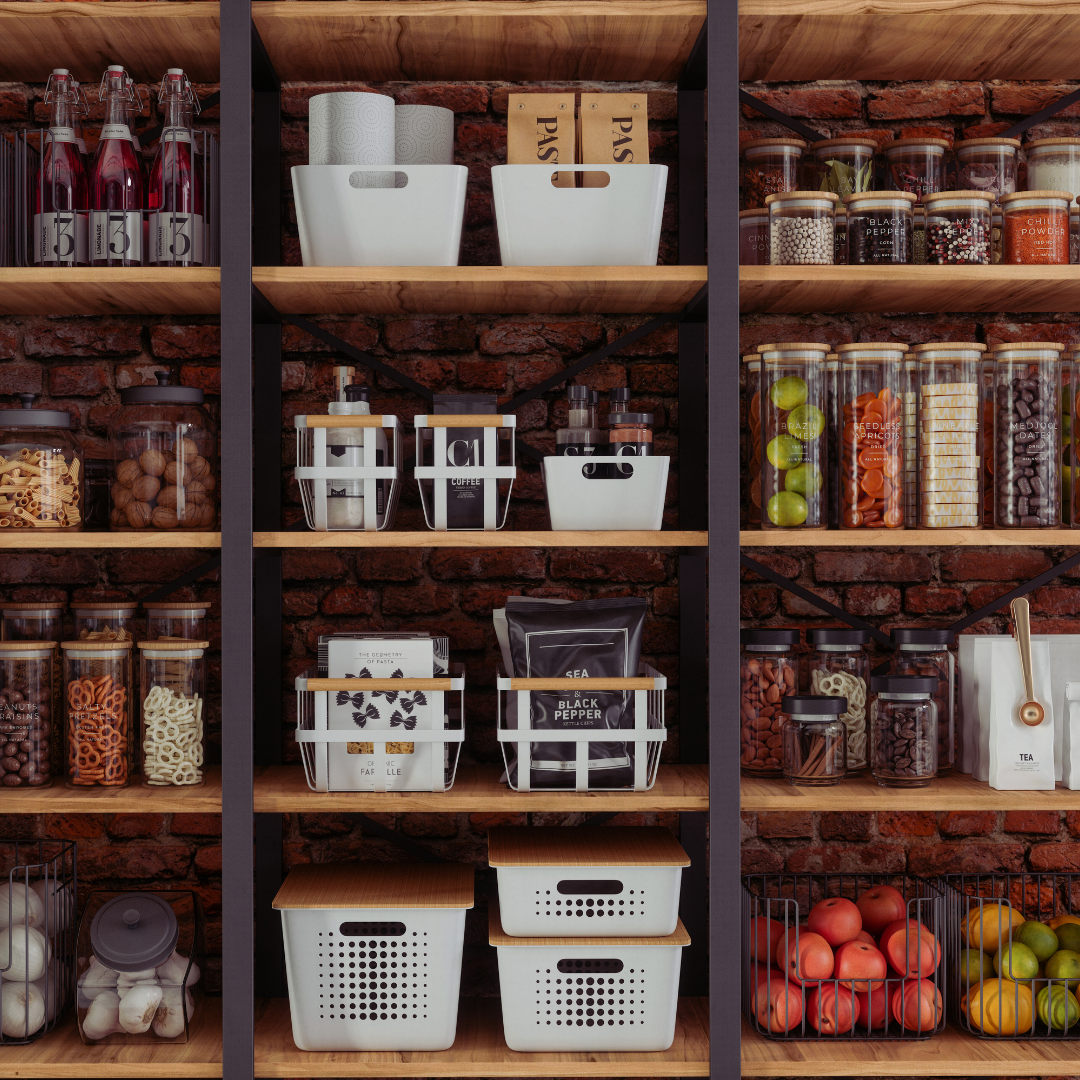How to Organise Your Kitchen Cupboards Like a Pro: Tips for Efficient Storage and Easy Access
Creating a functional and aesthetically pleasing kitchen cupboard setup can dramatically improve cooking efficiency and reduce clutter. To organise kitchen cupboards like a pro, one must categorise items by frequency of use, ensuring that daily essentials are easily accessible while less frequently used items are stored out of sight. This simple strategy not only streamlines meal preparation but also enhances the overall enjoyment of cooking.
A well-organised kitchen cupboard allows for better visibility of supplies, which means fewer duplicate purchases and less food waste. Shedding light on every item can spark creativity while cooking and reduce stress during busy meal times. By implementing smart storage solutions, such as using shelf organisers or clear containers, it becomes easier to maintain order and accessibility in the kitchen.
The process of organising can also be a rewarding opportunity to declutter and refresh the space. With a few straightforward changes, anyone can achieve a tidy and functional kitchen cupboard, making it a joy to use. Ultimately, a well-planned kitchen workspace is essential for any cooking enthusiast aiming for efficiency and elegance.
Essential Steps to Declutter and Organise
To successfully declutter and organise kitchen cupboards, a systematic approach is essential. This involves assessing current clutter, employing effective decluttering techniques, and ensuring spaces are clean and prepared before organising.
Assess Kitchen Clutter and Remove Unused Items
Start by opening each cabinet door and taking stock of what exists inside. Identify items that you rarely use or that have expired. These items contribute to kitchen clutter and should be removed.
Consider categorising items into three groups: keep, donate/sell, and discard. Assess the condition and functionality of each object. Items that are broken or no longer needed should be discarded.
Once this assessment is complete, he or she should dispose of the discard pile immediately to avoid second-guessing. Donating or selling usable items can free up space while helping others.
Decluttering Techniques for Kitchen Cabinets
Implement specific decluttering techniques to maximise efficiency. Use the ‘one in, one out’ principle: whenever a new item is added, an old item should be removed. This helps control clutter over time.
Utilise drawer organisers, shelf risers, and baskets to better categorise contents. Group similar items together, such as pots, pans, and utensils.
Every cabinet door can function as a valuable space; consider installing hooks or magnetic strips for storing measuring spoons or knives. This keeps essential tools within easy reach while maintaining a tidy appearance.
For those seeking a more advanced level of organisation, customised cabinets provide tailored solutions designed specifically for the kitchen’s layout and storage needs.
By partnering with reputable firms like Lovech, homeowners can access personalised cabinetry options that tend to optimise every inch of space, improve accessibility, and integrate features such as pull-out drawers, built-in dividers, or specialised compartments.
This approach not only maximises storage efficiency but also helps maintain a visually appealing, clutter-free environment.
Cleaning and Preparing Spaces Before Organising
After decluttering, thorough cleaning of the cabinet spaces is vital. Remove all items and wipe down shelves with a suitable cleaner to eliminate dust and grime. Pay attention to corners, where dirt often accumulates.
Next, consider lining shelves with shelf liners to protect against stains and spills. This also adds a finished look to the cabinets, making them visually appealing.
Once cleaned and prepped, the organisers can be placed in the cabinets, tailored to the newly categorised items. This initial preparation makes a significant difference in the overall organising process.
Smart Strategies for Optimising Kitchen Cupboard Space
Optimising kitchen cupboard space requires practical approaches that enhance storage efficiency. Maximising vertical space and utilising stackable containers can significantly improve organisation. The proper management of lower cabinets and kitchen drawers also plays a crucial role in creating a functional kitchen.
For homeowners, sites like https://sterlingkitchens.com/ can be especially helpful. These sites can showcase cabinetry options ranging from entry-level to fully custom and explains how design choices impact storage, workflow, and installation. Visiting a showroom to see finishes and pull-out mechanisms in person can also make decisions clearer and help avoid mistakes when planning built-ins or specialised compartments. Working with a supplier early ensures everything, from measurements and materials to accessibility features, is carefully thought out before the project begins.
Maximising Vertical Space and Usable Storage
Utilising vertical space is essential for making the most of kitchen cupboards. Installing additional shelves can help create more levels for storing items, allowing for better use of height. Adjustable shelving can provide flexibility to accommodate different sizes of containers and appliances.
Hooks and racks can be installed on the inside of cupboard doors to store smaller items such as utensils or pot lids, freeing up valuable shelf space. Storing heavy items at the bottom ensures stability. Using clear containers makes it easier to see contents, reducing the time spent searching for ingredients.
Using Stackable Containers and Shelf Liners
Stackable containers are a practical solution for maximising storage efficiency. They help utilise cubic space effectively, making it easier to store dry goods, snacks, and other staples. Choosing containers that are uniform in shape allows them to fit neatly together without wasting space.
Shelf liners not only protect the surfaces of cupboards but also create a non-slip base for containers. Using liners that are easy to clean contributes to maintaining a tidy and hygienic environment. Clearly, labelling containers can further streamline access to frequently used items.
Organise Lower Cabinets and Kitchen Drawers
Lower cabinets and kitchen drawers often become cluttered. Implementing pull-out shelves and drawers can make accessing items easier while maximising the use of the available space. This design allows for easier retrieval of pots, pans, and other kitchen essentials.
Dividers can be used within drawers to separate cutlery and utensils, preventing chaos during meal preparation. In lower cabinets, placing frequently used items at the front ensures accessibility. Grouping items by type or usage can help save time in the kitchen.
Organising Dishes, Cookware, and Food Storage
A well-organised kitchen cupboard improves efficiency and makes cooking more enjoyable. Proper sorting and storage of dishes, cookware, and food storage containers can transform a cluttered space into a functional area.
Sorting and Storing Dishes and Mugs
To begin with, categorise dishes by type. Group plates, bowls, and mugs together to create designated areas. It’s helpful to use stackable options to maximise vertical space.
Mugs can be stored on a dedicated shelf, ideally side by side. Consider using a mug tree for easy access. Plates and bowls should be stacked, with larger dishes at the bottom.
Using dividers can keep plates upright and prevent chipping. Ensure everyday items are placed at eye level while seldom-used items can go higher up or in less accessible zones.
Efficiently Store Pots, Pans, and Bakeware
Pots and pans take up significant cupboard space. Stack pots and pans with corresponding lids to save space. A pot rack can be an excellent solution for frequently used cookware.
Use a deep drawer or pull-out shelf for bakeware. Store baking sheets and pans vertically, utilising dividers to prevent them from toppling over. This not only conserves space but also provides easy access.
For lids, a separate holder or rack keeps them organised and prevents them from becoming a hassle to find.
Arrange Cutting Boards and Food Storage Containers
Cutting boards should be stored upright or in a dedicated bin to keep them accessible. Consider a pull-out rack where boards are easily viewable yet secure.
When it comes to food storage containers, stack them with lids secured to their corresponding containers. Label containers for quick identification. Nesting containers save space.
Utilise a shelf or drawer with clear dividers for organisation. Transparency in storage helps maintain a tidy appearance while allowing easy access to all necessary items when preparing meals.
Advanced Storage Solutions and Maintenance
Optimising kitchen storage involves smart techniques such as incorporating cabinets or open shelving, and creating a dedicated pantry. Proper maintenance aids in sustaining organisation, ensuring that storage space remains efficient.
Incorporating Cabinets & Shelving and Creating a Pantry
To start off, when planning an efficient layout, it’s important to consider how storage styles integrate with the overall kitchen design. In this regard, exploring the differences between options like frameless vs framed cabinets can guide homeowners in selecting ones that align with both their aesthetic preferences and practical storage needs.
Another alternative that can be considered is open shelving, which offers a modern solution to kitchen organisation. It not only displays items attractively but also makes frequently used items easily accessible. To implement open shelving effectively, consider the following:
- Strategic Placement: Install shelves at eye level for common items.
- Grouping: Keep similar items together, such as spices or cookware, to streamline access.
- Decorative Touches: Use attractive containers for a polished look.
Creating a pantry can significantly enhance kitchen storage. A pantry requires careful planning, which may include:
- Clear Containers: Use glass or labelled plastic containers for visibility.
- Vertical Space: Maximise height with stackable shelves or bins.
- Seasonal Rotation: Store rarely used items at the back and rotate as needed.
Maintaining Organisation Over Time
Maintaining an organised kitchen requires diligence. Regularly evaluating the storage system is key to long-term success.
- Routine Checks: Schedule monthly checks to remove expired items.
- Adjustments: If certain items are hard to reach, consider relocating them for better accessibility.
- Label Systems: Use labels on bins and shelves for clarity and to facilitate quick returns.
Adopting these practices allows for a consistently organised kitchen environment. Regular attention ensures that the kitchen serves its purpose effectively, supporting a streamlined cooking experience.


